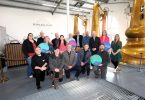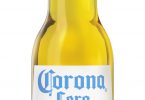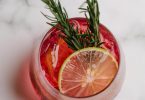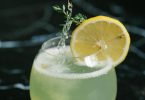NoLo sector remains poorly served
A comprehensive new study just released by the IWSR offers an in-depth analysis of the growing low-alcohol and no-alcohol categories.
IWSR’s Global Opportunities in Low- and No-Alcohol report examines market size by volume, key players in the industry, on-trade analysis, product innovation and important consumer trends.
The current market for no- and low-alcohol products remains small in most parts of the world.
In the UK, for instance, NoLo brands represent only 1.3% of the country’s total beverage alcohol market.
In the US that number is even smaller at 0.5%.
Nonetheless, research indicates that consumers are actively looking to reduce their alcohol consumption and they universally support the notion of NoLo-alcohol beverages if they can find products that meet their taste expectations, providing new opportunities for the global beverage alcohol industry.
“The ‘Dry January’ movement isn’t new, but one of the reasons we’ve heard so much more about it this year is the broader trend that points to consumers’ increased interest in physical and mental health,” said IWSR Chief Executive Mark Meek, “And that’s creating an interesting shift in consumer preference for low- and no-alcohol beverages, outside of soft drinks.
“For leading producers of beverage alcohol, this obviously presents considerable opportunity to develop new products, claim their share of the category and ultimately grow revenue.”
Most bars and restaurants around the world that were surveyed by the IWSR for this study offered non-alcohol beer while non-alcoholic wine was notably absent.
The IWSR claims that non-alcohol beer is growing rapidly at the same time as low-alcohol beer volumes are declining with bartender attitudes towards NoLo-alcohol products varying widely by market too.
In almost all markets the IWSR’s research shows that the off-trade channel (beer/wine/spirits retailers) offers a significantly greater selection of NoLo-alcohol products than bars and restaurants.
The IWSR’s study indicates specific market trends in NoLo-alcohol in a number of countries.
UK
Looking back 10 years it was virtually impossible to find non-alcoholic beer in the UK’s ubiquitous pubs or supermarkets. This has changed considerably.
In fact 2019 saw the emergence of the first non-alcoholic beer-dispensing mechanism in London bars.
NoLo-alcohol products are forecast to show healthy growth in the UK, led by spirits (rising 81.1% CAGR 2018 to 2022) and ready-to-drink products (rising 44.3%). NoLo cider in the UK is expected to grow by 13%, with low-/no-alcohol wine up 6.6% and beer up 4.9%.
According to the IWSR’s survey, 65% of the heaviest UK alcohol consumers (25-34-year-olds) are trying, or have tried, to cut back on their alcohol intake. The study also shows 61% of consumers indicating that they have not considered drinking NoLo-alcohol products – much potential therefore remains to convert those drinkers (especially as the number of products increases and availability widens).
US
Though 52% of US consumers surveyed in the IWSR’s study say that they’re trying to reduce their alcohol intake, over 70% of people say they’ve not yet considered drinking NoLo-alcohol beverages.
NoLo-alcohol products currently account for only 0.5% of the total US beverage alcohol market. However a recent influx of investment by key beverage alcohol companies is likely to draw in a new generation of consumers and contribute to the forecasted rapid growth of the category (while growth in most alcohol categories remains moderate and alcoholic beer is in decline).
The largest category gainer in the NoLo sector in the US will be ready-to-drink products (rising 38.8% CAGR 2018 to 2022). That’s followed by wine at 17.7% and spirits at 7.1%. Low-/no-alcohol beer, which currently accounts for the lion’s share of the NoLo-alcohol beverage market in the US, is predicted to grow 5.6%.
Spain
Spain is one of Europe’s largest and most well-established NoLo-alcohol markets, particularly in the beer and mixed drinks segments. The IWSR’s survey results show that 95% of Spanish consumers are trying to reduce their alcohol intake and 80% of people have considered or would consider NoLo-alcohol products.
Consumption of NoLos is ‘normalised’ in the country, with widespread coverage within both the on- and off-trade. This trend has been driven by several cultural factors including the introduction of stricter drink-driving laws and a broader wellness and “health-conscience cultural shift”.
At least 50% of bars and 60% of restaurants surveyed in Spain have NoLo-alcohol beverages, many with branded cocktails on their menus.
The IWSR’s analysis predicts that low-/no-alcohol spirits in Spain will grow by 36.8% (CAGR 2018-2022), wine will increase 19.8% and beer 6.7%.
Germany
While total beverage alcohol consumption in Germany has been in decline recently and is expected to remain stagnant, the NoLo-alcohol category is showing growth.
Germany is a significant market for dedicated NoLo-alcohol products, particularly non-alcoholic beer, with 60% of consumers surveyed reporting that they have, or would consider, drinking NoLo-alcohol products.
One of the factors contributing to growth and awareness of NoLo-alcohol products in Germany are the ‘Alkoholfrei’ (alcohol-free) searchable databases in all the major beverage e-commerce platforms in the country. There are also platforms entirely dedicated to alcohol-free solutions.
The IWSR predicts that NoLo-alcohol spirits will grow by 14.4% to 2022 in Germany. Ready-to-drink NoLo products are forecast to increase by 13.3% and NoLo cider will be up 11.4%. Wine (particularly driven by NoLo-alcohol sparkling products) will show growth of 4% in the country and beer 1.6%.
Australia
Alcohol consumption is widespread in Australia but the youngest age group has a fairly high proportion of non-drinkers. Mindful drinking is a discernible trend in Australia, with over half of the consumers surveyed indicating that they have considered or would consider drinking NoLo-alcohol products, spurring a small but burgeoning NoLo-alcohol industry in the country.
Non-alcohol beer commands the largest share of the Australian NoLo-alcohol market but is expected to decline very slightly by 0.1% (CAGR 2018-2022).
NoLo-alcohol spirits are predicted to grow 28.6% albeit from a very small base.
Cap:








